Whether you’re trying to keep to a strict calorie count, or just your favourites too. Let’s see how they stack up.
The Contenders
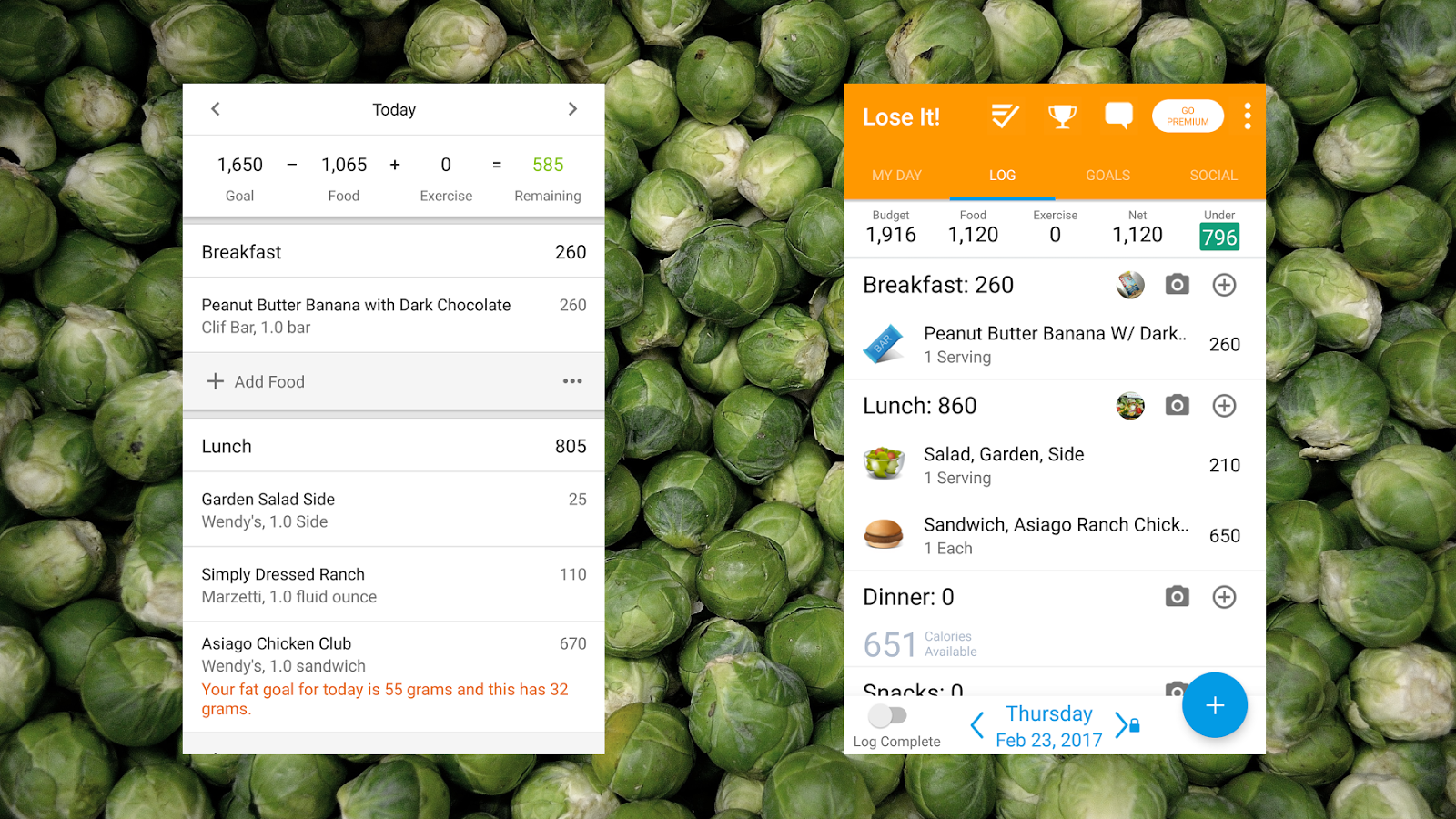
There are tons of diet trackers out there, but these two have long been popular and versatile options. Both are easy to use, remind you to enter each meal, and give you a big-picture view of your nutrition for the day. You can also log and track your weight through these apps.
- MyFitnessPal (free, iOS/Android) is part of Under Armour’s kingdom, alongside MapMyRun and other fitness apps. It’s full of features and connects easily to other devices.
- Lose It! (free, iOS/Android) is simpler, but still does everything a diet tracker needs to do. Its most obvious edge over MyFitnessPal is a feature to quickly enter foods by photo recognition, so you just have to snap a picture of your plate to get started.
Both are free, but offer a premium level with more features. MyFitnessPal’s subscription costs $US9.99 ($13)/month or $US49.99 ($65)/year, and offers extras like the ability to set calorie goals for different days or different meals, a spreadsheet export, and the option of tracking exercise without increasing your calorie goal (an approach that may be best in the long run).
Lose It’s premium subscription is $US39.99 ($52)/month. It lets you create goals for different nutrients (for example, making sure you get a certain amount of a vitamin) and lets you track more goals than just weight, including body measurements and the amount of water you drink each day.
Both Make Entering Foods Quick and Painless
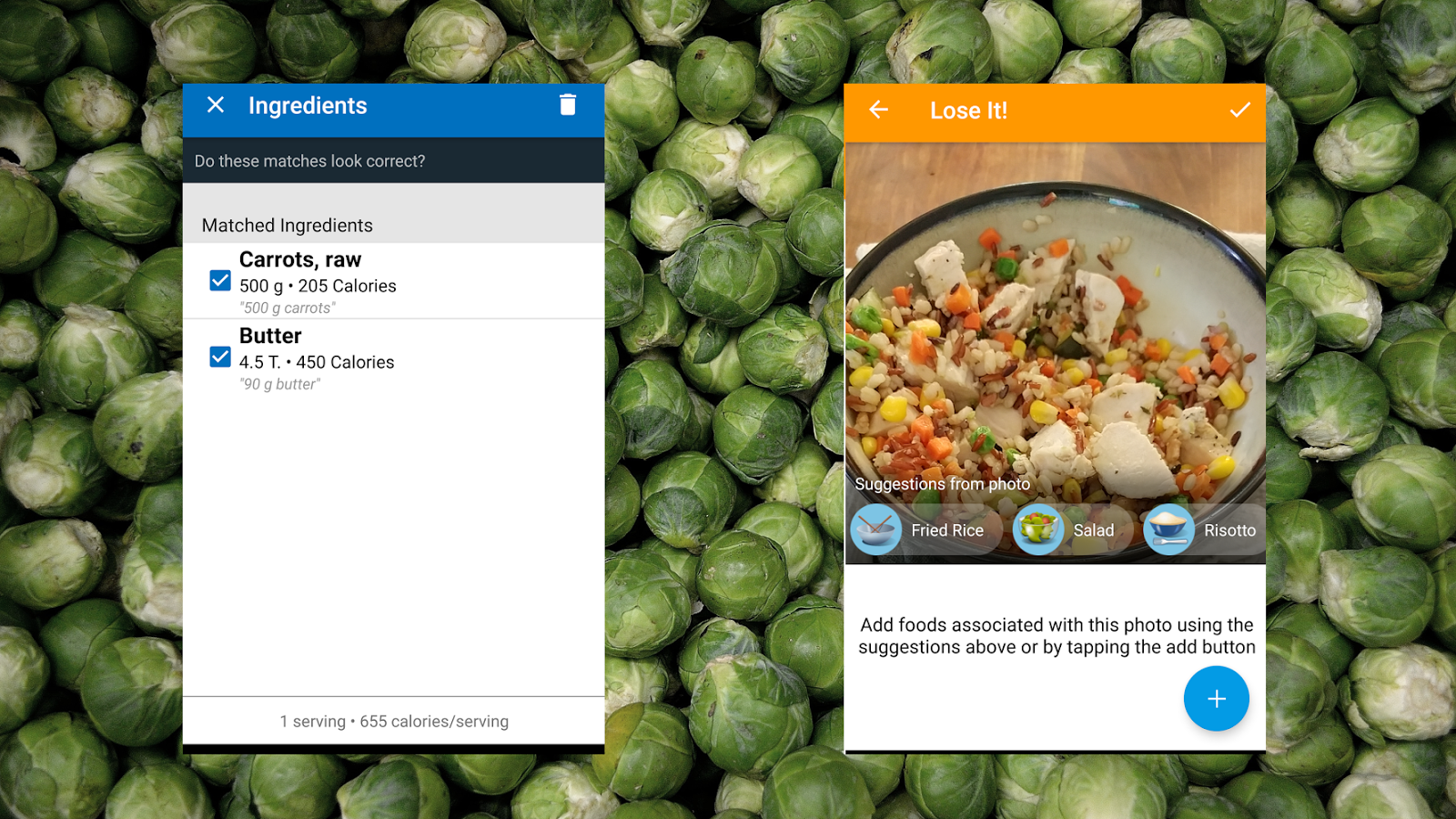
Since you’ll be entering foods several times a day, this task needs to be smooth and fast. Fortunately, both apps can add foods quickly, and have multiple ways of doing it:
- Choose one of your recently used foods.
- Search for a food from their database, which includes packaged foods and restaurant meals.
- Indicate that this meal is the same as a previous one (handy for leftovers).
- Add a recipe, either manually or by pasting the URL from a recipe website.
- Enter a food that’s not in the database, by copying all the numbers from its nutrition facts label.
- Enter just the calories for a new food (good for when you have the label but don’t feel like entering everything).
- Scan the barcode from a label.
Once you’ve been using the app for a while, adding recently used foods is the quickest. We all tend to come back to the same foods over time, so once you find or enter your favourite salad, it will be there in your list when you have it again next week.
Lose It has a tiny edge over the competition here, with three shortcuts:
- Quick Add: You can enter a food quickly, without having to enter all of its information, by just punching in its calories, fats, carbs, and proteins. MyFitnessPal has the same feature, but limits you to calories in the free version.
- Search Restaurants by Location: If you’re sitting in a restaurant when you browse the restaurant foods, Lose It can use your location to find the right restaurant without searching. Unfortunately, the feature didn’t find my local Wendy’s, so I had to search for it anyway.
- Snap It: If you snap a picture of your food, the app will pop up a series of labels that represent guesses for what it might be. Tap a label, and you’ll find yourself in a search for that item. This worked great for a glass of red wine (guess: red wine) but not for a chicken dinner. Lose It guessed pancakes, hummus, and ice cream; chicken wasn’t even in the top ten. They say the feature is still in beta, so it may improve. Still, I found it handy as a shortcut to search for some items. It also keeps a thumbnail of the photo next to that meal in the app, which is a nice visual reminder of what the meal actually was.
We’re going to declare this a narrow win for Lose It, but not everyone will feel the need to use those extra features.
Accuracy Is Hard to Call
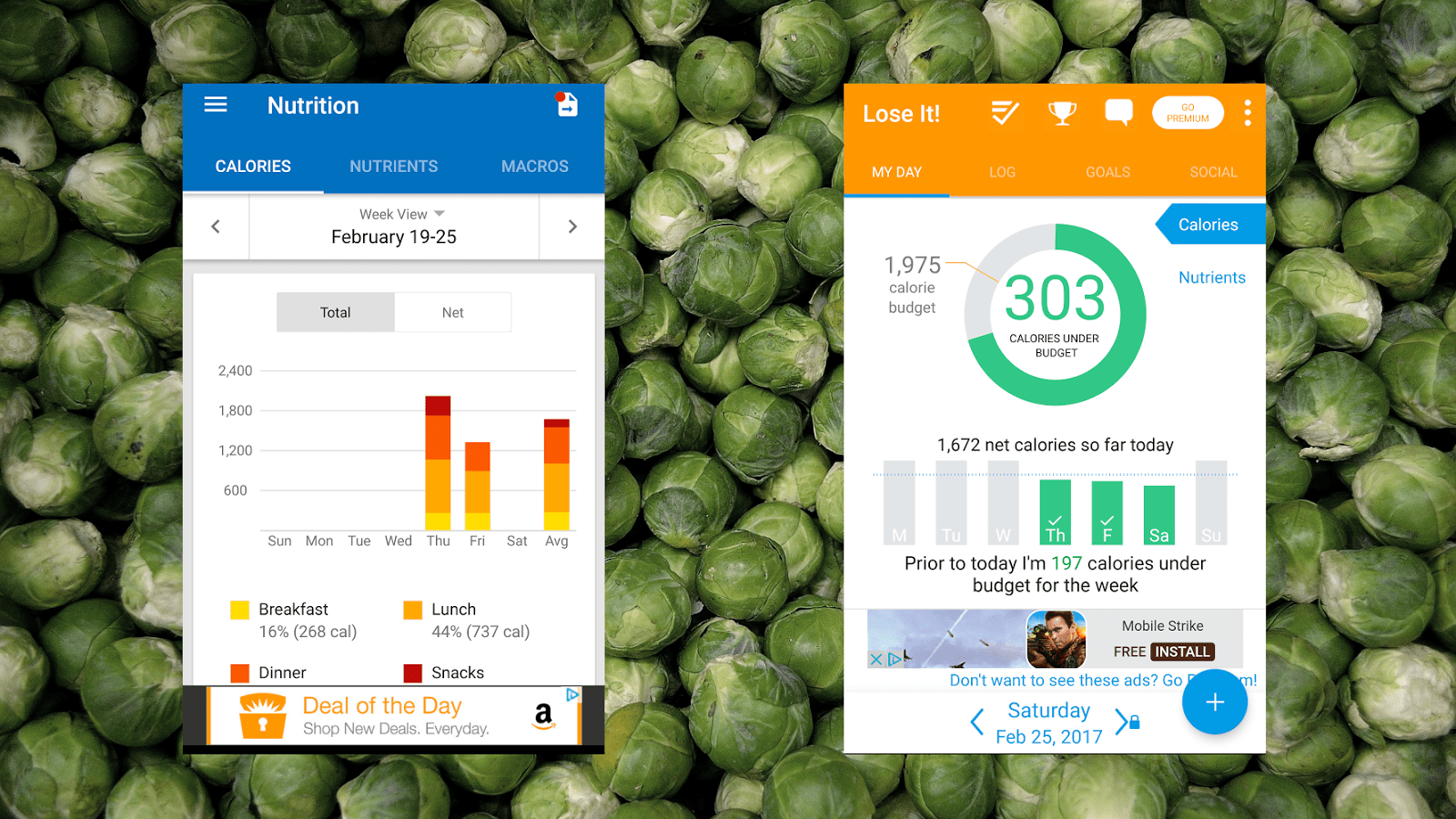
Both apps have an extensive database of foods, although neither was totally reliable. For the same 127.57g portion of steak, MyFitnessPal listed 156 calories and Lose It listed 328. From other food items, it seemed MyFitnessPal was more likely to give a lower estimate, but it also gave me a lower total calorie goal. MyFitnessPal seems to have more users complaining about inaccurate calorie counts, but that may just be because it has more users overall.
Without more complete data on accuracy, it’s hard to say whether one app is reliably more accurate than the other. Calorie counting is never going to be totally accurate, anyway, so take any numbers with a grain of salt.
Both apps give you a target number of calories, based on your age, sex, and weight. Entering the same information, I got a target of 1,650 from MyFitnessPal, versus 1,916 from Lose It. There are different methods of calculating your calorie needs, and none is guaranteed correct, so the truth will come out as you figure out what happens to your weight over time. We can’t declare a winner here, but it’s good to know what the discrepancies are.
Lose It Shows You More At a Glance
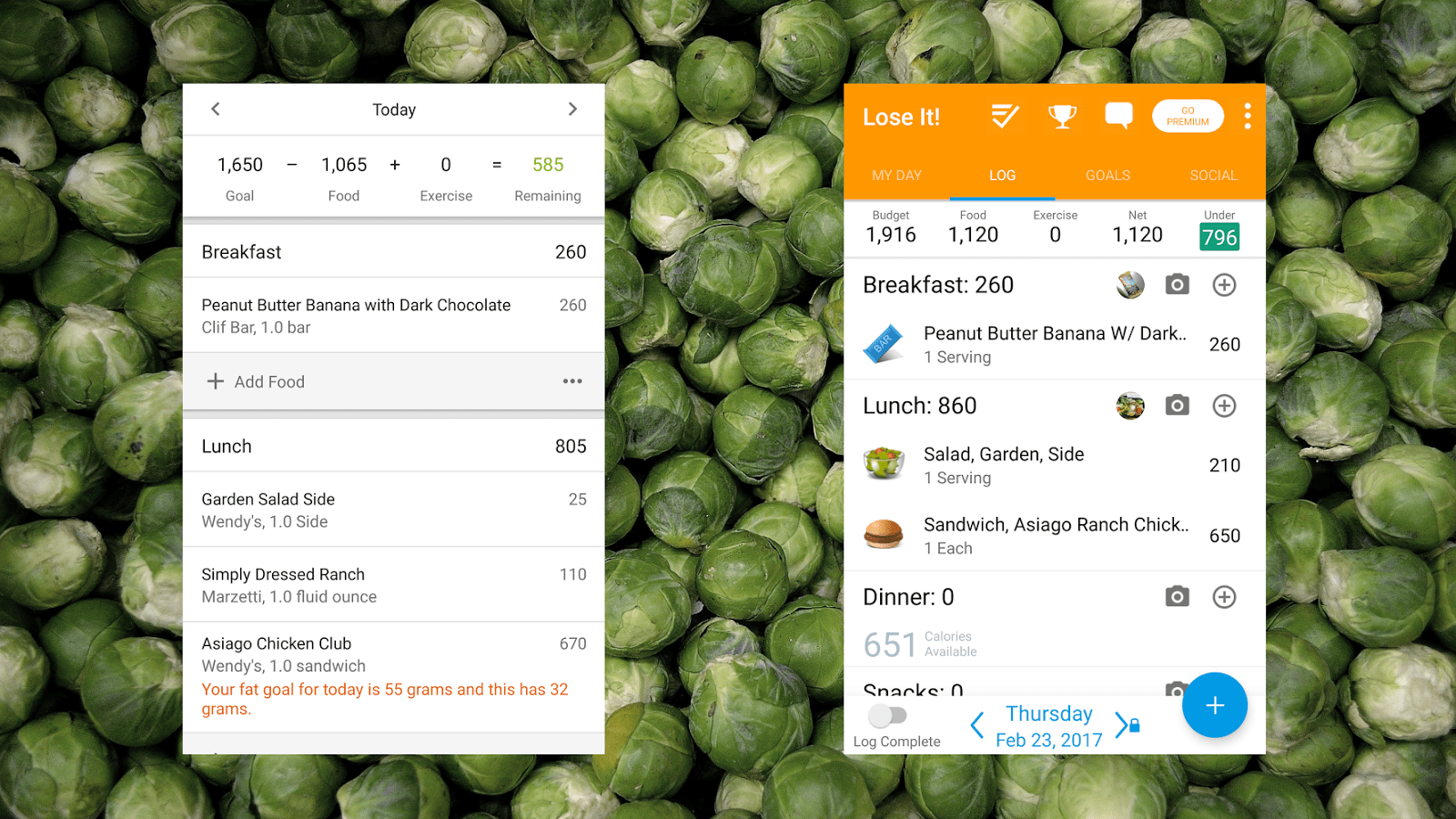
This one is subjective, but I found Lose It to have a nicer interface. Each food item gets a little illustration next to its listing, so it’s easier to scroll through and see what you had in each meal. If you used the Snap It feature, you’ll also see a thumbnail of the photo of your meal.
Lose It also gives you a calorie target for the meals you haven’t eaten yet; MyFitnessPal can do the same, but only in the paid version.
MyFitnessPal is a more complex app, and this makes it a little more annoying to use if you’re just trying to track your diet. You keep getting bumped back to the home screen, for example, which is full of blog posts. By contrast, when you complete an action in Lose It, you return to the food diary itself.
MyFitnessPal Connects to More Apps and Devices
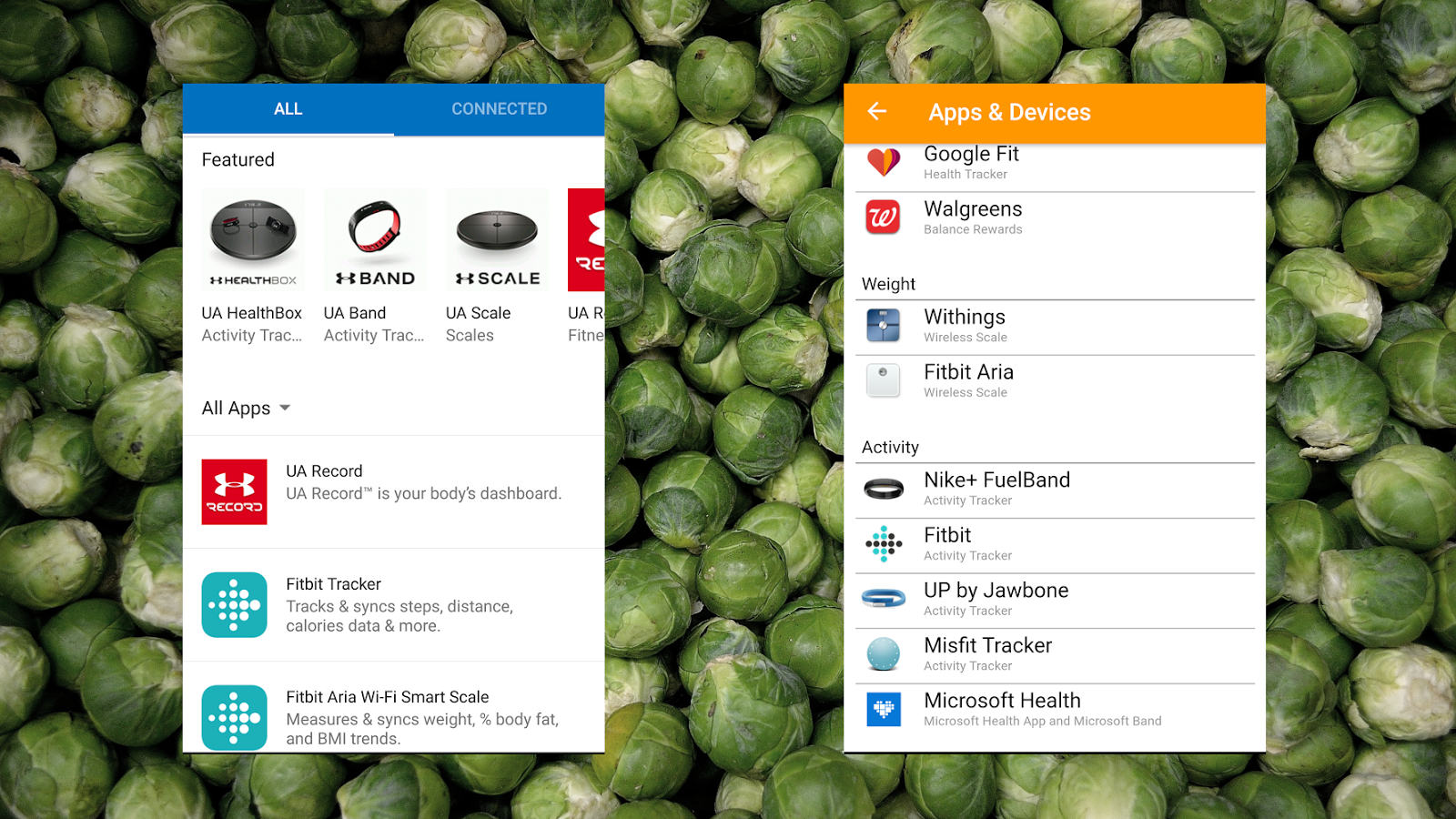
That complexity, though, is MyFitnessPal’s strength. It’s part of the Under Armour family of apps along with MapMyRun, MapMyFitness, Endomondo, and more. You can also install UA Record to get a snazzy dashboard view of various aspects of your health.
Lose It can connect with a handful of apps and devices (Fitbit, RunKeeper, and MapMyRun are all included) but its selection pales in comparison to MyFitnessPal’s hundreds of options.
Both can connect to Google Fit or iOS HealthKit, so you aren’t giving up too much if you choose Lose It. But if you use several other apps for fitness and want your diet tracker to be fully plugged in, MyFitnessPal is the app for you.
The Verdict: Lose It Is the Slicker Standalone App, but MyFitnessPal Is Better Connected
If all you want is a diet tracker, Lose It has a few advantages: a nicer interface and some extra ways to add food quickly. But if you have a handful of favourite fitness apps and devices, MyFitnessPal is more likely to integrate smoothly with your health-tracking life.
Neither app is perfect: both have occasional errors in their food database and they don’t agree on how many calories you need. If you frequent a certain restaurant, you should check out both apps’ databases to see whether your favourite foods are in there. But in the end, either will track your diet effectively.
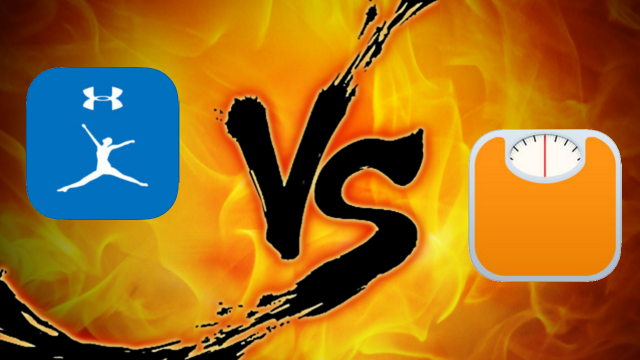
Comments
One response to “Diet Tracker Showdown: MyFitnessPal Vs. Lose It”
Assuming that “Lose It’s premium subscription is $US39.99 ($52)/month.” should be “/year”
Diet Diary for Android by Rarepebble. Simple and no BS
Been using MyFitnessPal since Christmas when I got my Fitbit. What I like about it is that it gives me a calorie target, and if I am having a lazy day, it lowers that target to take into account I haven’t been doing anything to burn calories.
Before I used MFP, I was using Argus. However, Argus doesn’t fully integrate with Fitbit, so I dropped it. That being said, the activity of tracking my calories, and making sure to stay under my calorie target has allowed me to lose 14 kg in the last 6 months (roughly 2.3 kg per month).
I’ll have to check out Lose It, but my advice for anyone trying to lose weight/gain weight is to just find an app you are comfortable using, and stick with it. Weight loss/gain takes time. You won’t be bulging muscles and ripped abs over night. Those guys you see in adverts have been training for YEARS to get that way. Even if you are trying to get to a specific size without the muscle, set yourself a small incremental monthly target, rather than some huge figure.
The fact is, 2kg+ is quite drastic weight loss, but I did it using a combination of calorie counting, resistance training, and LIIT (I am not a fan of HIIT, but that’s a personal preference). Overall, the best lifestyle change is the one you can stick with, there will be some sacrifice, but you have to have the discipline and willpower to make it happen.
Sadly, My Fitness Pal’s database is woefully inaccurate. If I take an off-the-shelf food item and enter the brand and food name into MFP, I get several entries which wildly conflict with each other. None of them seems to match the nutritional info printed on the food item’s package. Presumably, they crowd-source some of their data which, from a data quality perspective is a dead-end.